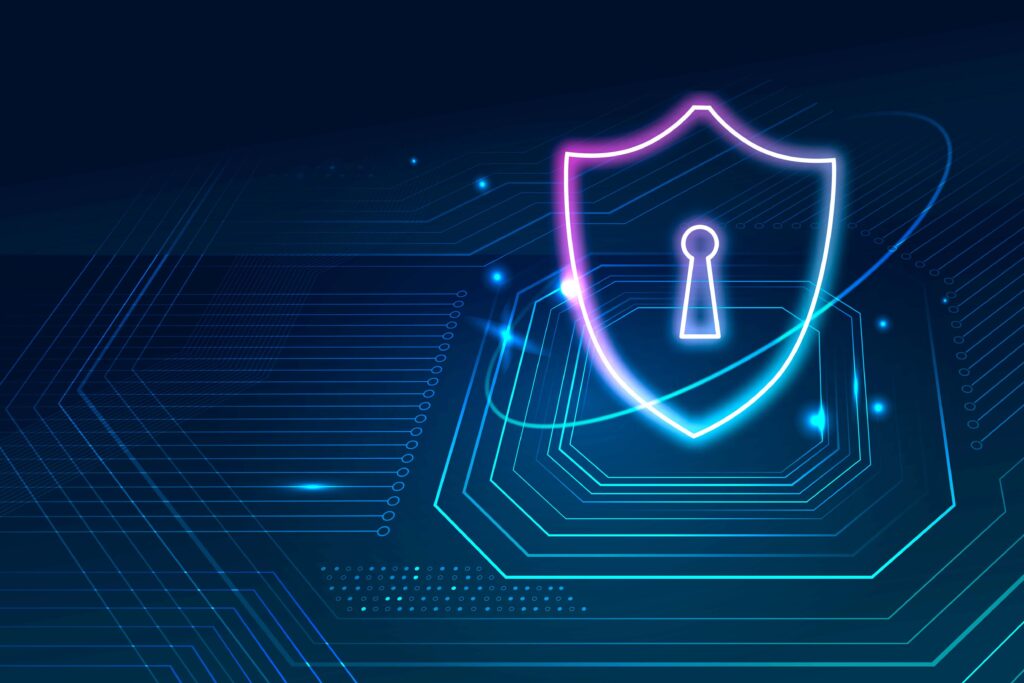Digital Signature in Cryptography
In the field of cryptography, a digital signature is an important concept that guarantees the integrity and consistency of documents or digital communications. It involves a mathematical process in which content is entered with a private key and then authenticated with a corresponding public key.
Integrating 3D art development into this process enhances its visual appeal and engagement factor. Digital signatures, akin to real-world written signatures, not only authenticate the sender’s identity and ensure message integrity but also provide a secure framework for electronic transactions and communications. Amidst the digital landscape, where credibility is paramount, 3D art development injects an extra layer of creativity and innovation, transforming mundane transactions into immersive experiences. By seamlessly merging technology and artistry, digital signatures not only guarantee the accuracy of electronic data but also captivate users with visually compelling representations of trust and authenticity.
What is Cryptography?
Cryptography, which has its roots in ancient Greek, where “kryptós” means “hidden” and “gráphein” means “to write,” refers to the art and science of secure communication in an increasingly digitally connected world.
Cryptography applications serves as the foundation of information security by providing a way to protect personal information from prying eyes and illegal access. Cryptography applications encryption is basically the process of converting data into an incomprehensible format so that only those with the right key can access its secrets.
In recent years, the significance of cryptography has expanded into the realm of metaverse development. Just as it safeguards sensitive data in traditional applications, cryptography plays a pivotal role in securing virtual environments within the metaverse. Whether it’s protecting digital assets, ensuring privacy in virtual interactions, or fortifying the integrity of virtual economies, cryptography serves as the cornerstone of security protocols in this burgeoning digital frontier. As the metaverse continues to evolve, the integration of cryptographic techniques remains essential for safeguarding the confidentiality and integrity of virtual data, ensuring that the immersive experiences within these digital realms are not only captivating but also secure.
A digital signature in cryptography?
Digital signature is a useful tool in the field of encryption for consistency, immutability, and authenticity of information and digital documents. In cryptography, digital signatures work similarly to traditional written signatures on paper to verify the identity of the sender and guarantee that the information has not been altered during transmission.
However, in the digital realm, this goal cannot be achieved using only static signature images. Using sophisticated mathematical and cryptographic techniques, digital signatures and encryption enable the publication of electronic documents in a clear, secure and unmistakable manner.
Modern information security requires digital signatures and encryption to protect various types of digital transactions, including government records, e-commerce transactions, and email messages.

The Importance of digital signature and cryptography
In today’s world, the importance of digital signature and cryptography cannot be overstated. In an increasingly digital and connected society, these technologies act as guardians of data security and promote trust. Here are a few key points highlighting their importance:
- Data security: Is ensured by the strong layer of protection provided by digital signature and cryptography, which keep sensitive data private and safe from unwanted access. They prevent hostile actors from intercepting or altering important data by encrypting it and requiring user authentication.
- Data integrity: Digital signature in cryptography use cryptography to confirm that no changes have been made to the data while it is being transmitted. This is necessary to guarantee the accuracy of data in crucial applications like financial or legal contracts, stop fraud, and ensure the dependability of digital documents.
- Non-Repudiation: In legal and corporate situations, non-repudiation is an essential notion. It is more difficult for the sender to retract their participation in a transaction or the creation of a document when they use digital signatures. Cryptography applications are important for disagreements and court cases.
- E-commerce: Digital signature in cryptography provide safe online transactions in the e-commerce space, boosting customer and company confidence. They guarantee that both parties are adhering to the provisions of electronic contracts and agreements.
- Government and Legal Use: Digital signature in cryptography are used by governments to secure and authenticate vital records and papers, such as birth certificates and passports. Cryptography applications are employed in legal contexts for electronic filing, notarization, and preserving the integrity of court records.
Real life Applications of Cryptography
Cryptography applications ensure the security and privacy of sensitive data and communication in a wide range of real-world applications. The following are some significant real-world uses for cryptography:
- Secure Communication: Sensitive information is shielded from eavesdroppers and unauthorised access using encryption techniques in voice-over-IP (VoIP) calls, instant messaging, and email correspondence.
- Online Banking and Finance: Cryptography applications are essential to the security of online banking and financial transactions because it maintain the confidentiality and integrity of personal and financial data.
- E-commerce: To prevent unwanted access, your payment information is encrypted when you make a purchase online. E-commerce websites are secured by cryptographic technologies like SSL and TLS, which reassure customers that their transactions are secure.
- Authentication: To verify users’ identities and make it more difficult for unauthorised people to access systems like username/password systems, biometrics, and multi-factor authentication, cryptography is utilised in these techniques.
- Digital Signatures: As was previously said, digital signature in cryptography are used in a variety of contexts, including the legal and corporate worlds, to confirm the veracity and integrity of digital documents, contracts, and messages.
What are the applications of Cryptography?
Applications of cryptography, or the study of secure communications in a variety of industries, are widely applicable. In a secure communication environment, it protects the integrity and secrecy of email correspondence, instant messages, and voice calls. Protecting sensitive corporate data is equally vital for online banking and finance.
This safeguards payment details and gives clients peace of mind about the security of online transactions in e-commerce. Applications of cryptography are crucial to digital authentication systems that confirm users’ identities, like multi-factor authentication and biometrics. Ensuring patient privacy in electronic health records is essential in the medical industry. In order to protect private and secure data, it is also used to secure file storage, smart cards, and mobile devices.
Applications of cryptography are used by the military and intelligence sectors to safeguard data and communications related to national security. Encryption is a support for blockchain technology, which guarantees the dependability and security of cryptocurrencies. Applications for cryptography are essential for safeguarding the authenticity, secrecy, and integrity of data and communications via secure file sharing, secure messaging, and Internet of Things (IoT) apps.

Applications of cryptography in network security
Applications of cryptography play a major role in network security by safeguarding private information and enhancing digital communications. Encryption techniques safeguard data during transit across a network, making it impossible for adversaries to decipher even if they manage to intercept it.
To secure online transactions and information communicated on websites, cryptography software like Secure Sockets Layer (SSL) and Transport Layer Security (TLS) establish an encrypted connection between a web server and a browser. Mobile and distant users can safely access the company network and the Internet by utilising a virtual private network (VPN), which builds a secure tunnel through encryption.
Cryptography applications are used by network security systems like IPsec to identify and encrypt data between network devices, safeguarding data integrity while it is in transit. Furthermore utilised in networks for sensitive data transfers, authorization, and authentication are digital certificates and cryptographic application keys, which are crucial components of a successful network security plan.
Conclusion
Digital interventionists are advocates for the value of online transactions and data integrity in a world where information moves fast and the digital landscape is constantly changing These marks in cryptography applications protect the integrity of documents and digital transactions , while respecting the concept of anonymity and privacy .
The value of digital signatures for privacy cannot be overstated as we overcome the challenges of our connected lives. They have fundamentally changed the way we communicate, behave and engage in the digital world, building trust in an environment that can sometimes be vulnerable to risk and attack
FAQs
Q1: What are the applications of cryptography and network security?
Network security and cryptography are applied in the protection of digital communications and data. They offer secure remote access via VPN, safeguard email, online banking, and e-commerce transactions, and protect critical data on mobile devices. Applications utilising cryptography are crucial for upholding confidentiality and trust in the digital era because they enable user authentication, grant access, and preserve data integrity throughout networks.
Q2: What is the application of cryptography in cyber security?
By limiting unauthorized access, reducing cyber threats, and preserving data integrity and privacy, cryptography plays an important role in cybersecurity It is used in roads access control through authentication mechanisms, secure data storage, and encrypted communications. The use of cryptography is also the basis for secure digital signatures and authentication systems, which reduce fraud, identity theft and data breaches while enhancing overall cybersecurity.
Q3: What is the application of quantum cryptography?
Quantum cryptography makes use of concepts from quantum mechanics to provide extremely secure communications. Quantum states are mostly utilised for secure key exchange, which makes sure that keys sent between parties are not susceptible to eavesdropping, because of their significant properties. Quantum cryptography applications are at the forefront of safeguarding vital communications pathways in scenarios where the highest level of security is essential, such as in the government, military, and certain sectors of the banking and healthcare industries.
Q4: How can we secure file storage on cloud using hybrid cryptography source code?
Hybrid cryptography involves a combination of symmetric and asymmetric encryption to ensure the security of file storage in the cloud. To do this, you can use Python programming languages and libraries such as PyCryptodome. Create a symmetric key for each file, use it to encrypt it, and then use the recipient’s public key to encrypt the symmetric key.
Read More Blog:
Blockchain Development Company in India
What Is Metaverse? Exploring the Future of Digital Worlds
Image by rawpixel.com on freepik
More Blogs You May Like
- The Ultimate Guide to Online Reputation Management for Doctors
- 5 Essential Website Development Services for a Seamless User Experience
- NFT Marketplace Development Company- Netleon
- Digital Marketing Trends and Importance of User
- Website Like The Blue Nile with Application: The Ultimate Guide
- Achieving Real-Time User Insights with Braze Integration Solutions
- Why Ongoing Education is Critical in Full-Stack Development
- How to Implement Blockchain in Business? A Complete Guide
- Success of Companies Founded in Recession
- Mobile Application Development for Businesses – A Complete Guide


